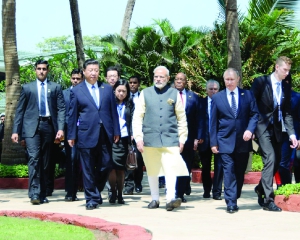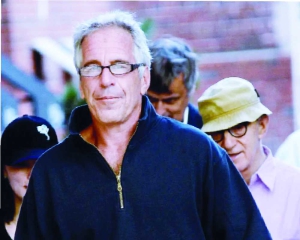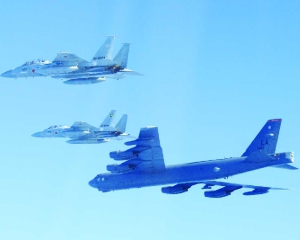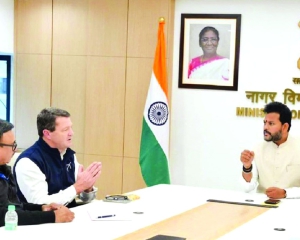Maha Kumbh is not just a religious event; it is a celebration of India’s ancient traditions, deep cultural heritage, and the enduring spirit of unity, where millions come together to take a holy dip at the Triveni Sangam and experience the joy of shared spirituality, writes GYANESHWAR DAYAL
As the crowds gather at the confluence of the Ganga, Yamuna and the mythical Saraswati, the Mela takes shape. The largest gathering of humanity on the planet, it is a fair that people eagerly wait to attend and be part of. Prayagraj, in Uttar Pradesh, becomes the hub of this incredible event, which is as much about religion and spirituality as it is about community, bonding, and experiencing the sheer joy of being part of a gathering of over 400 million people. Maha Kumbh 2025 highlights India’s deep cultural and religious heritage. It is the largest gathering of the Sanatan faith, bringing together 40-45 crore devotees from across the country and the world, all coming to take a holy dip at the confluence of the Triveni Sangam.
The Kumbh Mela, held once every 12 years, is an incredible convergence of faith, devotion, and humanity. Despite its overwhelming size, with millions gathering at Sangam, this colossal event runs like clockwork, leaving attendees with profound experiences of serenity and joy. Amidst the sprawling tented city, the incessant noise, the biting cold, and rudimentary facilities, devotees not only endure but thrive. They rise before dawn, immerse themselves in freezing waters, and live in harmony with others, fostering a deep sense of collective identity.
Far from being a source of stress, the Kumbh Mela is a celebration of shared goals and mutual respect. Pilgrims feel the bliss and spiritual elevation as mere presence in the fairenhances mental and physical wellbeing. The Kumbh Mela proves that crowds can be a force for good, creating an unparalleled sense of community where individuals support and uplift one another. This temporary city of faith and devotion becomes a microcosm of human unity, leaving a lasting impact on the lives of those who participate, transforming both their spiritual and social realities.
A unique event rooted in mythology
The Kumbh Mela dates back to primordial times. It is an ancient Hindu festival celebrated at four locations — Prayagraj (formerly Allahabad), Haridwar, Ujjain and Nashik. The , as the name suggests is the grandest of them all and occurs once every 12 years at each location, where the confluence of the Ganges, Yamuna and Saraswati rivers in Prayagraj is regarded as the holiest. The event’s primary significance lies in the ritual bathing at the confluence, which is believed to wash away sins and offer liberation, or moksha, to the soul. The is a unique occasion for Hindus and other spiritual seekers to purify themselves, celebrate religious unity, and reflect on spiritual values.
The is deeply rooted in Hindu mythology and scriptures. The festival marks the period when amrita (nectar) was churned from the ocean by the gods and demons during the Samudra Manthan. A drop of this divine nectar is believed to have fallen at the four Kumbh sites. Pilgrims believe that taking a holy dip in the river at the designated time can cleanse them of all their worldly sins and provide spiritual enlightenment.
The 2025 starts from January 14 to March 10, 2025. These dates are chosen based on the alignment of the planets, which, according to Hindu astrology, is a time when the river is most auspicious for bathing. The Maghi Purnima (full moon) and Makar Sankranti are among the most important dates for devotees to participate in the holy bath.
Impact on Local Communities and Tourism
The Maha Kumbh brings a significant economic boost to the region. Local businesses such as hotels, transportation services, food stalls and religious souvenirs experience a surge in demand. For Prayagraj, it serves as an opportunity to showcase its rich cultural history and tradition to a global audience. Tourism, both spiritual and cultural, takes a huge leap during this period.
The 2025 is a spectacular event that will attract millions of people seeking spiritual solace, cultural enrichment, and a sense of unity. For many, it’s a once-in-a-lifetime opportunity to witness the grandeur of a truly sacred festival, a celebration of devotion, culture, and unity.
Mahakumbh 2025
As 2025 unfolds in Prayagraj, Uttar Pradesh. Millions of devotees are expected to participate in the religious fervour, and the preparations are already underway to accommodate such a massive influx of people. has myarid aspects to it but the most important is the bathing at Sangam and that to on auspicious days such as Makar Sankranti or Maha Shiv Ratri. It is the day when the crowds are busting at seams and there is a mad rush to take the dip at Sangam the holiest spot to get the drop of nectar that spilled from the Kumbh or the pitcher.
One of the most vibrant features of the Maha Kumbh is the grand processions that include Naga Sadhus (ascetic holy men), holy men from various orders, and religious leaders. These processions are filled with music, chanting, and divine energy, drawing immense crowds. The highlight of these processions is the Shahi Snan (royal bath) where prominent saints take a dip in the river before the masses.
The is not only about spiritual pursuits but also a showcase of India’s rich cultural heritage. There are numerous discourses, yagnas (fire rituals), bhajans (devotional songs) and kirtans (sacred hymns), along with folk performances, exhibitions, and cultural showcases from different parts of the country. No wonder is an international event as people from across the globe throng to be part of this once-in-a-lifetime experience. The world media covers it like crazy and researchers and sociologists find it a great place to understand the human mind and behaviour.
Naga Sadhus: The Mystical Ascetics
At the heart of the Akharas’ mystique are the Naga Sadhus, renunciate ascetics known for their stark austerity and profound spirituality. These sadhus completely renounce worldly life, abandoning material comforts, including clothing, to devote themselves to self-realisation and the pursuit of salvation. Their presence at the , especially during the Shahi Snan (Royal Bath), is a sight to behold. Naked, their bodies often smeared with ash, they symbolise a life detached from earthly ties and aligned with higher spiritual pursuits.
Juna Akhara: The Oldest and Most Prominent
Among the Shaiva Akharas, the Juna Akhara holds a special place as one of the oldest and most influential monastic orders. Revered for its deep-rooted traditions, it houses a significant number of Naga Sadhus. The Akhara’s processions during the Kumbh are grand spectacles, marked by chants, conch sounds, and the rhythmic beating of drums. These processions reflect a rich tapestry of devotion and discipline.
Kinnar Akhara: Inclusivity in Spirituality
The Kinnar Akhara, though not officially recognised by the Akhara Council, has emerged as a symbol of inclusivity and spiritual unity. Associated with the Juna Akhara, this Akhara provides a spiritual space for the transgender community, often overlooked in mainstream religious narratives. The Kinnar Akhara’s participation in the highlights a progressive shift, embracing diversity within the realm of spirituality. Their processions and ceremonies are marked by vibrant expressions of devotion, drawing significant attention and respect.
The Mela, with its congregation of Akharas, serves as a profound reminder of India’s spiritual richness. From the ascetic rigor of the Naga Sadhus in the Juna Akhara to the inclusive vision of the Kinnar Akhara, each Akhara brings its distinct essence to the event. Together, they create a tapestry of devotion and cultural heritage, inspiring millions to partake in this celestial celebration of faith and unity.
The Akharas: Guardians of Tradition
The Mela, a grand religious event celebrated once every twelve years, stands as a remarkable convergence of spirituality, devotion, and tradition. Among its many fascinating aspects, the participation of Akharas -monastic orders of ascetics, captures the essence of India's spiritual diversity. These Akharas, each steeped in unique practices and philosophies, add a vibrant dimension to the event, attracting millions of devotees and curious onlookers alike.
There are 13 Akharas, which are broadly classified based on their devotional focus:
Shaiva Akharas: Devotees of Lord Shiva.
Vaishnav Akharas: Worshippers of Lord Vishnu.
Udasin Akharas: Followers of Guru Nanak's teachings, blending spiritual paths.
The names of the 13 officially recognised Akharas include:
1. Juna Akhara
2. Niranjani Akhara
3. Mahanirvani Akhara
4. Atal Akhara
5. Ahwan Akhara
6. Nirmohi Akhara
7. Anand Akhara
8. Panchagni Akhara
9. Nagpanthi Gorakhnath Akhara
10. Vaishnav Akhara
11. Udasin Panchayati Bada Akhara
12. Udasin Naya Akhara
13. Nirmal Panchayati Akhara


























